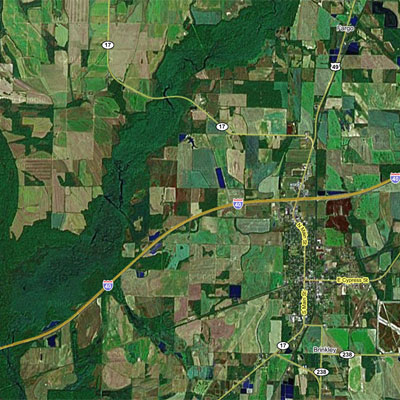1 - An Avian Apparition?
Adrift in an Arkansas swamp in February of 2004, a lone kayaker encountered what he believed could only be a figment of his imagination, an enormous black and white bird that had been declared extinct in North America for over fifty years.
Identified as an Ivory-Billed woodpecker, this sighting eventually launched a year-long secret expedition led by the Cornell Lab of Ornithology to study and document what many birders and ornithologists consider to be the single most important event in their lifetimes.
2 - Praise the Lord God Bird!
Once abundant throughout the Southeast, the striking and dramatic Ivory-Billed woodpecker was driven to extinction during the late 1800's by lumber companies clear-cutting hundreds of thousands of acres of primordial swamp forests.
AKA "The Lord God Bird", these amazing woodpeckers were twenty inches in height and had a wingspan stretching three feet, making it an icon of the South's magnificent and once boundless wilderness.
At the same time, the Ivory-Bill has become a haunting reminder of our failure to live within the limits of those same natural resources which we have long revered as a national treasure and birthright.
3 - Opportunity Knocks Twice
Midway between Little Rock and Memphis, Brinkley, Arkansas was once a thriving crossroads of two major cotton belt train lines. With boarded up storefronts on Main Street, the town has been waiting patiently for some kind of second coming, and the Ivory-Billed woodpecker may turn out to be their personal saviour.
Brinkley's citizens have quickly embraced the town's new-found celebrity as the "Home of the Ivory-Billed Woodpecker", spawning new business opportunities like woodpecker haircuts, Ivory-Billed hamburgers, Ivory-Billed souvenirs, an Ivory-Bill Inn, and guided swamp tours.
4 - A Nationwide Bird Flu
Bird watching is the fastest growing sport in the United States with an estimated 50-70 million amateur birders. Some diehard birders, unwilling to accept the finality of bird species declared extinct, have made pursuing so called "ghost birds" their soul passion, often at great personal sacrifice.
Though many bird species have become extinct in North America during the past century, Ivory-Bills have long been considered the Holy Grail of ghost birds, luring their fearless seekers into snake-infested, mosquito-ridden swamps from Florida to Texas. When news finally spread of the rediscovery of the Ivory-Billed woodpecker in Arkansas, the birding community gasped in collective ecstasy.
5 - Big Bird Bucks
Since announcing the Ivory-Bill's rediscovery, Cornell Lab of Ornithology in partnership with The Nature Conservancy, The Audubon Society, the U.S. Fish & Wildlife Service and other federal, state and local agencies, have attracted over 10 million dollars for the search expedition as well as habitat acquisition, preservation and rehabilitation.
Indicative of the Ivory-Bill's significance, Secretary of the Interior, Gail Norton, appointed more than fifty members to the largest recovery team ever assembled for an endangered species.
7 - The Ivory Bill Blues
What can explain the persisting lack of conclusive documentation? The woodpecker's adaptive fear of humans? It's characteristic hyperactivity? The sheer scale of it's range and inhospitable habitat? Wishful thinking?
Ghost Bird explores the passionate obsession of birders and and scientists embarked on this odyssey, whose success will not only decide the future of the town of Brinkley, but may prove to be the most spectacular resurrection of a species to date, or like the Holy Grail itself, continue to inspire the quest to find it while remaining tantalizingly out of reach.
6 - Now You See it...
After five years of rigorous searching, the Ivory-Billed woodpecker has eluded all efforts to be irrefutably documented, whether in person, by remote motion-activated cameras or with autonomous recording units (ARU's).
Subsequently, while there have been numerous eyewitness sightings, some intriguing audio recordings and a compelling but blurry video which has been subjected to extensive analysis, some members of the scientific community remain divided over a body of evidence that is increasingly becoming open to interpretation and debate as time passes.





